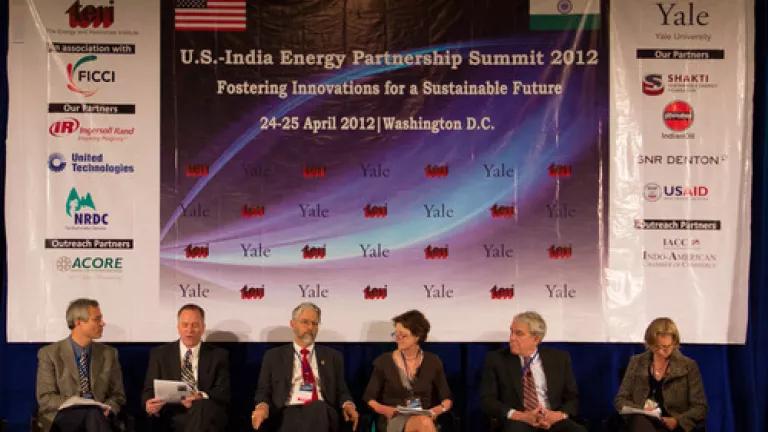
India has dramatically expanded its reliance on solar power over the past two years. Solar installations have sprouted across the nation and costs for this clean energy have dropped, according to a new report, Laying the Foundation for a Bright Future, released today by NRDC and our New Delhi-based partner Council on Energy, Environment and Water.
These new projects will power help India’s growth but they will also help achieve another urgent goal: slashing dangerous carbon pollution.
When I traveled to India a few months ago, I met with public health officials who said scorching heat waves had caused record numbers of people to suffer from heat stroke and heart attacks in 2010. I also heard how torrential rains threatened more than 2 million residents of Northeast India last September. It quickly became clear to me that India—like America and other nations around the world—is already paying the price of unchecked climate change.
But I learned something else during my trip: India is deploying one of the most effective weapons we have for fighting climate change: renewable energy. Our new report confirms how rapidly India’s clean energy sector has grown. India’s installed solar energy capacity jumped from almost 18 megawatts in 2010 to just over 500 megawatts at the beginning of 2012.
The price for this clean energy has dropped faster than anyone anticipated. Now solar power costs nearly the same as energy from coal and other dirty fossil fuels.
Smart government policies helped spur this growth. A few years ago, India launched the National Solar Mission with a goal of generating 20 gigawatts of solar energy by 2022. The mission has successfully attracted new domestic and international players into the market, from large conglomerates to technology start-ups.
It has also encouraged cooperation between U.S. and Indian financial institutions and manufacturers. This kind of collaboration is critical, because in addition to installing today’s solar panels, we have to invent tomorrow’s solar technology as well.
If we are going to reduce carbon pollution enough to prevent even more devastating floods and extreme heat waves, we need to innovate in ways we can’t even envision today. We will need the best minds at Yale, MIT, and the Indian Institute of Technology to work together to invent the future of solar and every other kind of renewable power.
In the meantime, India—like the United States—could do more to expand its solar market. We need more financing mechanisms that can unleash private investment. And in addition to large concentrated solar plants that feed into the electricity grid, the government should also promote off-the-grid solar in rural communities and rooftop solar installations. Millions of Indians lack electricity; decentralized solar projects could deliver power that is sustainable and free of dangerous pollution.
Many of these issues will be discussed at this week’s U.S.-India Energy Partnership Summit, hosted by The Energy and Resources Institute and Yale University. This summit is the only event that brings both American and Indian government officials, business executives, and civil society leaders together to discuss how both countries can usher in a cleaner energy future. I spoke at the event, as well as learned from other participants, including Al Gore and Dr. Pachauri of the UN’s Intergovernmental Panel on Climate Change.
One of the themes running through the event was the urgent need to act. India and the United States are already experiencing the extreme heat, dirty air, flooded homes, and upturned lives brought on by climate change. We will suffer more of these devastating consequences unless we take steps now to reduce carbon pollution. India’s solar mission is an impressive move in that direction.
